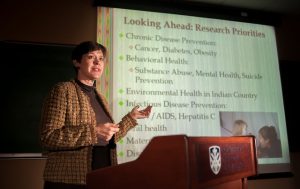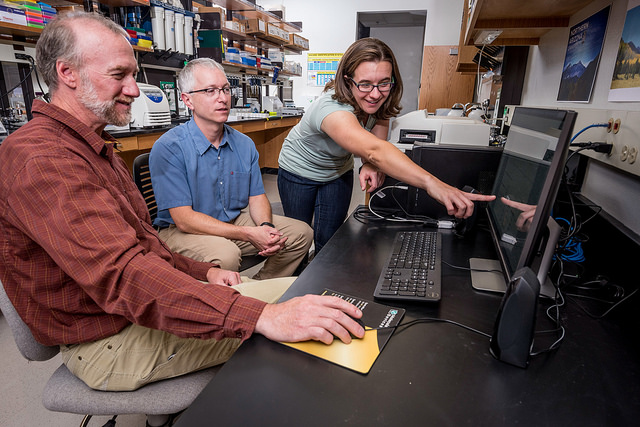A partnership between Northern Arizona University and the Yuma medical community will provide a new look into the effects of decades-old water contamination in the Arizona border community.
Frank von Hippel, a professor of biological sciences, is the principal investigator for the pilot project, which is funded by a $200,000 grant from Arizona’s Flinn Foundation. The project will look at perchlorate exposure in Yuma residents and potential adverse health outcomes. Perchlorate is a known disruptor of thyroid function, leading to hypothyroidism.
“This is really exploratory to see if there is an association between perchlorate exposure and deleterious health outcomes,” von Hippel said. “If we find a significant relationship between perchlorate concentration in individuals and these health outcomes, then we would use those data to apply for NIH support and do a much larger study.”
Yuma residents get their water from the Colorado River, which several decades ago became polluted with perchlorate. There were a few problems, von Hippel said, but the primary source of the contamination was a production facility in Henderson, Nevada, which dumped the contaminant into a wash, where it entered the groundwater and ran into Lake Mead, then into the river.
Extensive cleanup activities have occurred at Lake Mead, but the levels of exposure for Yuma residents are unknown. The study will address the question of whether there is a current health threat posed by perchlorate contamination in Yuma.

The study will include 300 Yuma residents, half of whom have conditions that may be linked to perchlorate exposure and half, the control group, without those conditions. Health care providers will draw blood, collect urine and gather other indicators of health such as body-mass index. Investigators will measure hormone concentrations in the blood samples and perchlorate contamination in the urine samples.
Researchers also will go into participants’ homes and capture rats and mice. They’ll run similar tests but also dissect and examine the histology of organs most likely to be affected by perchlorate contamination. This and the other lab work will take place at NAU, with von Hippel and biology professor Loren Buck leading the lab work and Julie Baldwin, a professor of health sciences and director of the Center for Health Equity Research, and Robert Trotter, the associate vice president for health research initiatives and a professor of anthropology, will lead the research with the study participants.
Buck, who will evaluate the participants’ hormones in his lab and compare those levels to rodent levels, said he’s not sure what the team will find in this experiment.
“There is a chance the Colorado River has reduced in perchlorate concentration over the years and thus we would find

little evidence of endocrine disruption due to perchlorate,” he said. “However, if the levels in the drinking water are elevated, my bet would be that both direct and indirect evidence of endocrine disruption would be found in both people and resident animal model organisms.”
Additionally, the researchers will ask questions such as age, ethnicity, income and gender to examine whether potential health outcomes may be related to demographic factors.
Although the effect on the thyroid is the big question, von Hippel and his team are looking at other health outcomes as well, including the possible relationship between perchlorate and obesity. Previous studies have indicated the obesity epidemic may be due in part to exposure to contaminants, which have been shown in laboratory settings to cause animals to lay down fat deposits. The team also will look at possible effects of the chemical on reproductive diseases; von Hippel’s group has found perchlorate exposure leads to such conditions in animals.
The grant from the Flinn Foundation will last for two years.
“NAU deserves its strong and growing reputation in health outcomes research,” said Jack Jewett, president and CEO of the Flinn Foundation. “This study aligns with our board’s strategic focus on translational research and precision medicine. Beyond the important findings it could yield to benefit the people of Yuma, this project holds broader promise as Dr. von Hippel and his colleagues learn more about how and why contaminants such as perchlorate affect distinct sub-populations differently.”



